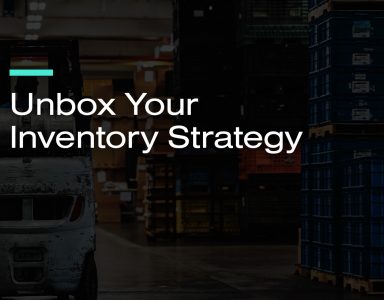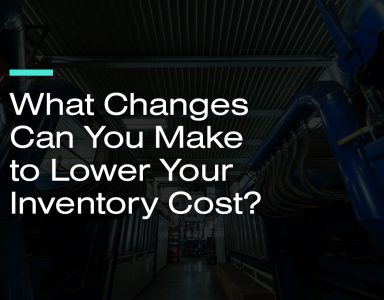
Maintaining the right amount of inventory is key to keeping up with the ebb and flow of customer orders. But what level is the “right” level? If a company doesn’t have enough product on hand, it may miss too many deliveries and lose customers. If it overstocks a product, it will incur increased carrying costs and its cash flow will suffer.
Fortunately, there is a solution to this inventory control conundrum. Businesses that want to be strategic and competitive in their market can use software to optimize their inventory. With ready access to inventory forecasting and optimization software, organizations can avoid the issues and costs associated with stockouts as well as excess and obsolete (E&O) inventory.
Basics of Inventory Forecasting
To run an effective business, organizations must develop an inventory planning strategy. That way, they can balance their supply with the rising and falling demand levels of their customers. Without proper inventory planning capabilities, all it takes is one unforeseen spike in sales to put an operation at risk for a stockout that may compromise customer relationships or worse, impact current and future revenue.
Inventory forecasting is the practice of creating a strategic inventory reordering plan. Supply chain professionals strive to maintain optimal amounts of inventory — neither overstocked nor understocked and to reach those optimal levels, organizations can use a variety of sources to help them develop their inventory replenishment schedule, such as:
- Trends in demand and sales forecasts
- Past sales history data
- Lead times from suppliers
Gathering and analyzing all the needed data is time-consuming—and often impossible—to accomplish if relying solely on manual spreadsheets. Inventory forecasting software offers a faster, more accurate alternative.
Where Inventory Forecasting Software Comes In
Inventory forecasting software enables the dynamic analysis of large volumes of data which can lead to more accurate forecasts and therefore improved operations and production.
If organizations are still using manual, unreliable inventory forecasting tools, such as spreadsheets, they may fall behind in completing orders. Spreadsheets fall short in several areas: Spreadsheets are prone to error, labor-intensive, lack in analytics capabilities, and are challenging to consolidate. These unfortunate qualities can cause a number of problems in the inventory planning process.
Overstocking inventory can be just as detrimental to a business’ financial bottom line as understocking. Although the business may not miss out on any customer orders, overstocking creates waste, particularly in the case of perishable items, such as food and beverages, or items dependent on trends, such as fashion or electronics.
With an effective inventory forecasting tool, organizations can analyze historical data and make adjustments on an as-needed basis. As a result, they are less likely to experience the pitfalls associated with overstocking and understocking inventory. Before implementing these technologies, businesses should understand the benefits that inventory forecasting software offers.
Inventory Forecasting Software Features
Forecasting and planning software provides planners with invaluable features right at their fingertips, which they can implement to streamline their inventory planning process. Not only do these tools allow planners to save time, they also empower supply chain professionals to use past data and predictions to optimize inventory levels.
Inventory forecasting and optimization software enables planners to better meet their desired service levels—the percentage of products delivered on time and in full. Maintaining a 100 percent service level is actually a bad idea, as the only way to deliver products on time and in full 100 percent of the time would be to carry a large surplus of inventory. Therefore, many planners use forecasting software solutions to maintain service levels of 90 percent or higher to reach a sustainable service level while simultaneously hitting financial goals.
Inventory software enables planners to conduct accurate replenishment planning, which can involve ordering, making, or transferring between facilities. They can plan inventory replenishment in daily or weekly buckets and automatically push orders to their ERP system for execution. These systems are also sophisticated enough to consider lead times, safety stock levels, and appropriate order sizes. Inventory optimization software ensures that the operations team has the right items when and where they need them.
Automating inventory forecasting saves time by eliminating the need to manually comb through spreadsheets. Automation also reduces the chance of human error, increasing productivity at all stages of the planning process. So, rather than relying on questionable spreadsheet numbers and gut intuition, turn to inventory planning software, such as DemandCaster, for the sound, data-driven assessments needed to ensure your inventory is “just right”.


